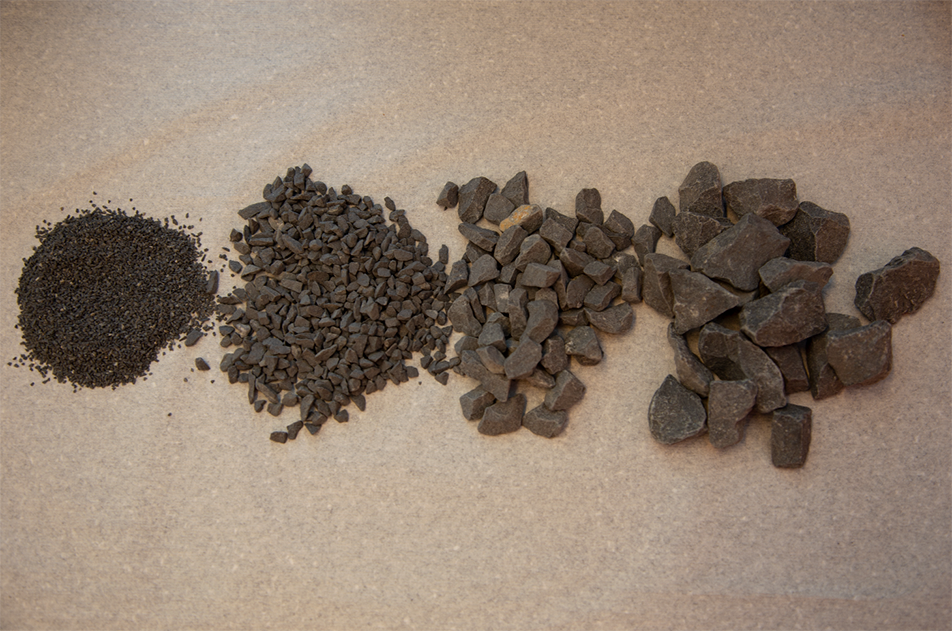The general idea is that the smaller the aggregate size, the more we need equipment to produce it. Production of aggregate starts typically from 800 mm pieces of blasted material. One crusher can only reduce the size by a certain amount. For example, manufactured sand is a very fine product with high quality requirements.
Even though all crushing processes produce fine products as a result of nature of the crushing process, those fines will not necessarily achieve the specifications for manufactured sand, or any desired specification. So they may need an additional crushing and screening process to meet those requirements. Today, manufactured sand is a lucrative business opportunity for many plants in this age of rapid urbanization. This is why more and more aggregates producers are looking into adding it to their repertoire.
Base materials
The base materials, in turn, are the easiest aggregates to produce. There are some demands for their grading curve, but typically, making base materials only requires two crushing stages. In that sense, producing them is relatively simple and cost-efficient.
Nowadays, the trend still seems to be that there are more and more quality parameters to be met, even for the base materials. This is especially true in the Nordic countries. The industry has nonetheless welcomed this change, because it means that the quality of all grain sizes has improved, or at least has been studied. High-quality material can now be found in all classes of aggregates, not just in those containing the finest products.
Sand equivalent parameters in road base material is nowadays a specification that needs special attention when the base material has to be produced from clean blasted rock. Therefore, the proper selection of the crushing and screening equipment – as well as the process design – plays a very important role in achieving this parameter.
Large grain sizes
Aggregates with larger grain sizes require less equipment, so they are more commonly produced than the finer products. However, production does not happen in an economic void. The demand for different aggregates varies based on local needs and the level of development. Some countries, like South Korea and India, have growing populations, and their cities are expanding substantially. These countries are building a lot of new infrastructure, for example roads and skyscrapers. The top layer of an asphalt road consists mostly of fine aggregate, but that layer is only about 15 centimeters thick. Underneath it, there is a huge amount of base material.

